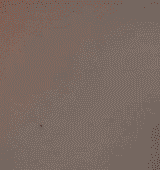





Einstein schreef:In de begindagen van de LSD stond het spul in de aandacht omdat de trip volgens psychiaters destijds eventueel als een model voor een echte psychose zou kunnen dienen, maar het bleek al snel dat dat niet echt zo was en dat de verschillen te groot waren.
. Albert Hofmann LSD My ProblemchildDrop Acid Not Bombs. ´´ The existence of LSD was even regarded by the drug-enthusiasts as a predestined coincidence---it has to be discovered precisely at this time in order to bring help to people suffering under the modern conditions´´ .LSD was dicovered in 1943; the atomic bomb was developed between 1942 and 1945
The true importance of LSD and related hallucinogens lies in their capacity to shift the wavelength setting of the receiving "self," and thereby to evoke alterations in reality consciousness. This ability to allow different, new pictures of reality to arise, this truly cosmogonic power, makes the cultish worship of hallucinogenic plants as sacred drugs understandable
What constitutes the essential, characteristic difference between everyday reality and the world picture experienced in LSD inebriation? Ego and the outer world are separated in the normal condition of consciousness, in everyday reality; one stands face-to-face with the outer world; it has become an object. In the LSD state the boundaries between the experiencing self and the outer world more or less disappear, depending on the depth of the inebriation. Feedback between receiver and sender takes place. A portion of the self overflows into the outer world, into objects, which begin to live, to have another, a deeper meaning. This can be perceived as a blessed, or as a demonic transformation imbued with terror, proceeding to a loss of the trusted ego. In an auspicious case, the new ego feels blissfully united with the objects of the outer world and consequently also with its fellow beings. This experience of deep oneness with the exterior world can even intensify to a feeling of the self being one with the universe. This condition of cosmic consciousness, which under favorable conditions can be evoked by LSD or by another hallucinogen from the group of Mexican sacred drugs, is analogous to spontaneous religious enlightenment, with the unio mystica. In both conditions, which often last only for a timeless moment, a reality is experienced that exposes a gleam of the transcendental reality, in vihich universe and self, sender and receiver, are one.
There is less danger of a cleft reality experience arising in a natural environment. In field and forest, and in the animal world sheltered therein, indeed in every garden, a reality is perceptible that is infinitely more real, older, deeper, and more wondrous than everything made by people, and that will yet endure, when the inanimate, mechanical, and concrete world again vanishes, becomes rusted and fallen into ruin. In the sprouting, growth, blooming, fruiting, death, and regermination of plants, in their relationship with the sun, whose light they are able to convert into chemically bound energy in the form of organic compounds, out of which all that lives on our earth is built; in the being of plants the same mysterious, inexhaustible, eternal life energy is evident that has also brought us forth and takes us back again into its womb, and in which we are sheltered and united with all living things.
We are not leading up to a sentimental enthusiasm for nature, to "back to nature" in Rousseau's sense. That romantic movement, which sought the idyll in nature, can also be explained by a feeling of humankind's separation from nature. What is needed today is a fundamental reexperience of the oneness of all living things, a comprehensive reality consciousness that ever more infrequently develops spontaneously, the more the primordial flora and fauna of our mother earth must yield to a dead technological environment.
I see the true importance of LSD in the possibitity ofproviding material aid to meditation aimed at the mystical experience of a deeper, comprehensive reality. Such a use accords entirely with the essence and working character of LSD as a sacred drug.
The rapid rise of drug use, which had its beginning in this country about twenty years ago, was not, however, a consequence of the discovery of LSD, as superficial observers often declared. Rather it had deep-seated sociological causes: materialism, alienation from nature through industrialization and increasing urbanization, lack of satisfaction in professional employment in a mechanized, lifeless working world, ennui and purposelessness in a wealthy, saturated society, and lack of a religious, nurturing, and meaningful philosophical foundation of life.
The existence of LSD was even regarded by the drug enthusiasts as a predestined coincidence—it had to be discovered precisely at this time in order to bring help to people suffering under the modern conditions. It is not surprising that LSD first came into circulation as an inebriating drug in the United States, the country in which industrialization, urbanization, and mechanization, even of agriculture, are most broadly advanced. These are the same factors that have led to the origin and growth of the hippie movement that developed simultaneously with the LSD wave. The two cannot be dissociated. It would be worth investigating to what extent the consumption of psychedelic drugs furthered the hippie movement and conversely.
Psychotic Reactions
Like the other hallucinogens, however, LSD is dangerous in an entirely different sense. While the psychic and physical dangers of the addicting narcotics, the opiates, amphetamines, and so forth, appear only with chronic use, the possible danger of LSD exists in every single experiment. This is because severe disoriented states can appear during any LSD inebriation. It is true that through careful preparation of the experiment and the experimenter such episodes can largely be avoided, but they cannot be excluded with certainty. LSD crises resemble psychotic attacks with a manic or depressive character.
In the manic, hyperactive condition, the feeling of omnipotence or invulnerability can lead to serious casualties. Such accidents have occurred when inebriated persons confused in this way—believing themselves to be invulnerable—walked in front of a moving automobile or jumped out a window in the belief that they were able to fly. This type of LSD casualty, however, is not so common as one might be led to think on the basis of reports that were sensationally exaggerated by the mass media. Nevertheless, such reports must serve as serious warnings.

















catootje schreef:er bestaan goeie psychoses en psychotische mensen kunnen ook lachkicks hebben.
But the drug effects differ from schizophrenia in significant ways too. Visual hallucinations or rather pseudohallucinations are dominant rather than auditory ones (imaginary voices). There are more perceptual changes, including the characteristic dreamlike imagery. The drug taker's mood is more likely to be pleasant or euphoric, he is rarely apathetic and emotionally numb, he suffers less disorganization of thought, and he is much more subject to influence and suggestion (Kleinman et al. 1977). Besides, psychedelic drugs can mimic the symptoms of many other disorders besides schizophrenia—manic-depressive psychoses, hysterical conversion syndromes, and so on.

Bertje schreef:Omdat ik regelmatig hoor dat een LSD trip ontzettend veel op psychoses lijkt. In sommige documentaires hoor ik psychologen praten, over dat je een psychose mee kan maken door LSD tot je te nemen. Maar dat lijkt mij nogal verkeerd om zo te denken. Als je een psychose wilt ervaren, moet je het zelf zijn lijkt mij.
Substance-induced psychosis is a form of substance-related disorder where psychosis can be attributed to substance use. Various psychoactive substances (both legal and illegal) have been implicated in causing, exacerbating, and/or precipitating psychotic states and/or disorders in users. This is also true of several medications that are not traditionally considered psychoactive drugs. Individuals who have a substance induced psychosis tend to have a greater awareness of their psychosis and tend to have higher levels of suicidal thinking compared to individuals who have a primary psychotic illness.
Psychotic states may occur after ingesting a variety of substances both legal and illegal and both prescription and non-prescription. Usually such states are temporary and not irreversible, with fluoroquinolone-induced psychosis being a notable exception
Alcoholic psychosis is sometimes misdiagnosed as another mental illness such as schizophrenia.


Trippie schreef:Ik vraag me af of een dikke pep-parra, zoals je die hebt na een dikke pep-binge en enkele dage zonder slaap geen redelijk model is voor een psychose zoals die bij schizofrenie.
Als ik meer dan 48u wakker ben en in die tijd flink wat pep heb verwerkt (die tijden zijn gelukkig wel voorbij, of dat is toch de bedoeling) kan ik m'n gedachten ook niet onder controle houden.
Gelukkig maar dat al die zever over is zodra ik een nacht heb kunnen slapen...
Dat soort bullshit krijg je niet van LSD.
catootje schreef:Trippie schreef:Ik vraag me af of een dikke pep-parra, zoals je die hebt na een dikke pep-binge en enkele dage zonder slaap geen redelijk model is voor een psychose zoals die bij schizofrenie.
Als ik meer dan 48u wakker ben en in die tijd flink wat pep heb verwerkt (die tijden zijn gelukkig wel voorbij, of dat is toch de bedoeling) kan ik m'n gedachten ook niet onder controle houden.
Gelukkig maar dat al die zever over is zodra ik een nacht heb kunnen slapen...
Dat soort bullshit krijg je niet van LSD.
iedereen wordt psychotisch als hij maar lang genoeg wakker blijft.
catootje schreef:Bullshit; de meeste psychiatrische patiënten weten donders goed wat er mis is met hun.
davy jones schreef:catootje schreef:Bullshit; de meeste psychiatrische patiënten weten donders goed wat er mis is met hun.
Tussen de psychosen in wel ja. Tenminste in zo verre ik dat kan beoordelen. Ondanks dat ik in een psychiatrisch centrum gewerkt heb en me al 10 jaar stuk lees over dit schrijnende thema, is alles wat ik er over zeg relatief.
Helaas snappen we nog maar bar weinig van deze mentale problematiek.
Maus schreef:Wees liev voor elkaar en leef in vrede
Albert Einstein schreef:
Der hauptgrund für stress ist der tägliche kontakt mit idioten
Leo Gura from http://www.actualized.org schreef:
Society is an amusementpark for the ego to distract you from truth


megatrippie schreef:Ik ben meerdere malen getuige geweest van een trip waar iemand niet meer wist dat hij/zij iets gebruikt had.
 Hallo PTSS
Hallo PTSS 

Enya schreef:megatrippie schreef:Ik ben meerdere malen getuige geweest van een trip waar iemand niet meer wist dat hij/zij iets gebruikt had.
Dat heb ik ook weleens gehad, en is zwaar fucked als je slecht gaatHallo PTSS

Poseidon schreef:Enya schreef:megatrippie schreef:Ik ben meerdere malen getuige geweest van een trip waar iemand niet meer wist dat hij/zij iets gebruikt had.
Dat heb ik ook weleens gehad, en is zwaar fucked als je slecht gaatHallo PTSS
Post Traumatische Stress Stoornis zelf is misschien wel een chronische psychose.
Maus schreef:Wees liev voor elkaar en leef in vrede
Albert Einstein schreef:
Der hauptgrund für stress ist der tägliche kontakt mit idioten
Leo Gura from http://www.actualized.org schreef:
Society is an amusementpark for the ego to distract you from truth


Maus schreef:Wees liev voor elkaar en leef in vrede
Albert Einstein schreef:
Der hauptgrund für stress ist der tägliche kontakt mit idioten
Leo Gura from http://www.actualized.org schreef:
Society is an amusementpark for the ego to distract you from truth


JongGeleerd schreef:Pieter210 schreef:Drugs is spelen met vuur
Druks schreef:Pieter210 schreef:Lsd is spelen met vuur
Wat een onzin.

Maus schreef:Wees liev voor elkaar en leef in vrede
Albert Einstein schreef:
Der hauptgrund für stress ist der tägliche kontakt mit idioten
Leo Gura from http://www.actualized.org schreef:
Society is an amusementpark for the ego to distract you from truth

Keer terug naar Voorstellen voor "vraag van de week"
Gebruikers op dit forum: Geen geregistreerde gebruikers. en 1 gast
